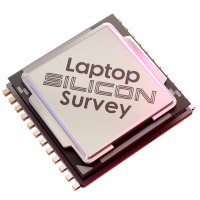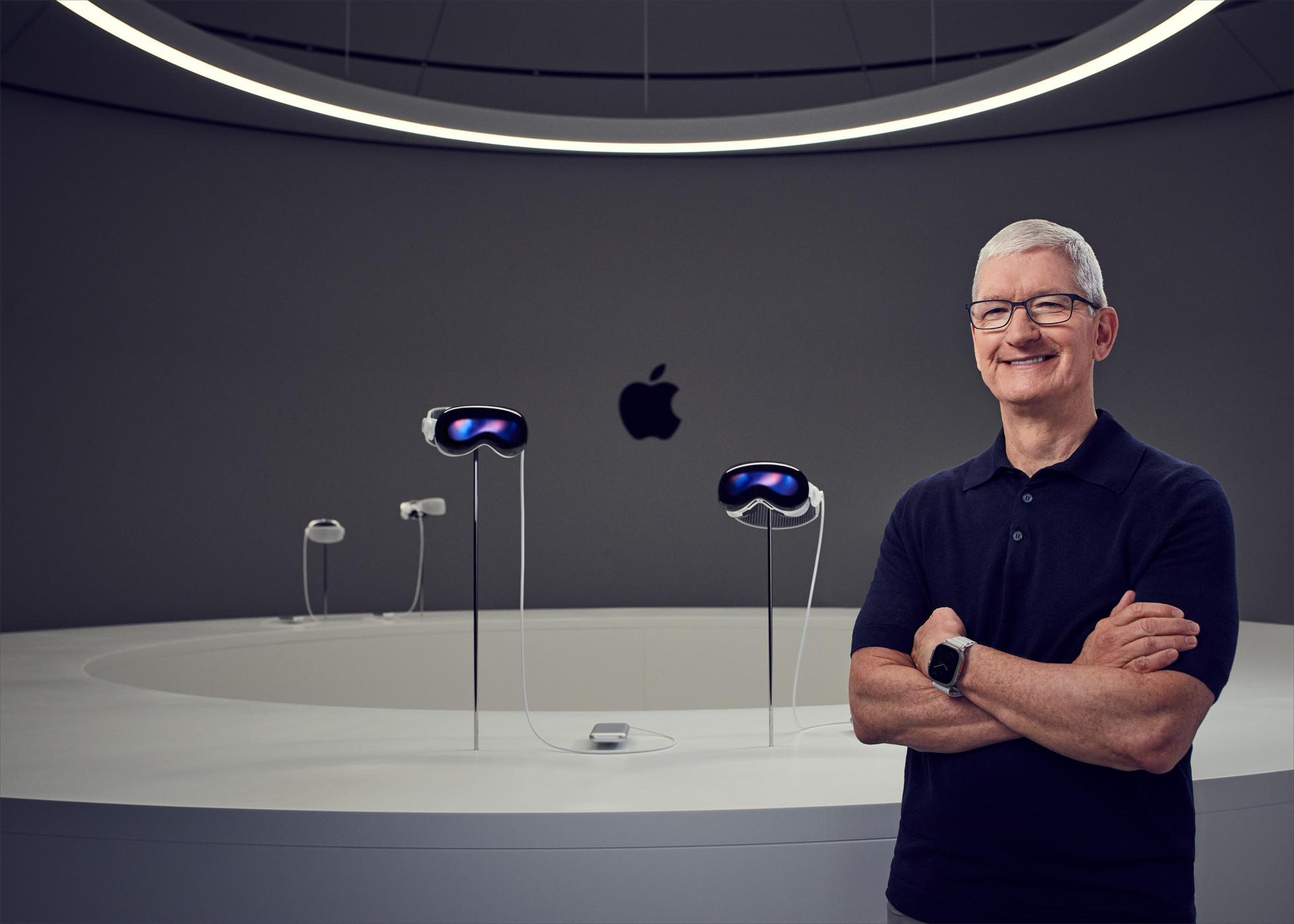“The consumer wins either way”: Arm’s Chris Bergey on the rise of Arm computing and the rivalry with x86
Smartphone success stories are now shaping the computing industry

A decade ago, it might’ve sounded backward to propose that smartphone technology would inform computer hardware, but that’s become a reality in 2025, thanks to Apple, MediaTek, and Qualcomm.
Arm, the UK-based semiconductor design house, is responsible for creating processing cores that implement the Arm instruction set for RISC (reduced instruction set computer) machines.
Arm also licenses the ARM instruction sets to companies that design custom cores based on Arm architecture. Apple Silicon, MediaTek’s Kompanio and Dimensity processors, and Qualcomm’s Snapdragon chipsets are all Arm-based platforms.
Thanks to the success of Apple’s M-series silicon and Qualcomm’s Snapdragon X Series, Arm has dominated much of the computing industry in the last few years.
Arm’s Senior Vice President and General Manager, Client Line of Business, Chris Bergey, tells Laptop Mag about the advantages of Arm technology and how it has shaped the world of silicon — from phones to tablets and Chromebooks to home PCs.
But Arm has done more in the last few years than just making new CPU cores. Arm PCs have become more powerful and efficient than their x86 counterparts, pushing Intel and AMD for further innovation.
“I think they’ve done a great job on Lunar Lake,” Bergey says of Intel’s most efficient processor.
However, Lunar Lake’s successes haven’t scared Arm. “We feel quite good,” Bergey says about Arm’s position in the PC race. “The consumer wins either way.”
This article is part of a Laptop Mag special issue featuring exclusive interviews interviews with Apple, AMD, Intel, Qualcomm, Nvidia, and more as we learn how their silicon will shape the future of CPUs and GPUs, check out Laptop Mag's Silicon Survey 2025 special issue for more.
Arm’s hardware dominance
Arm wasn’t a household name just a few years ago; for many, it still isn’t, but Arm’s instruction set and licensed designs are behind some of the biggest names in the silicon business.
Arm technology is behind some of the best chips currently on the market. Between Apple’s M and A-series Silicon, Qualcomm’s Snapdragon 8 and Snapdragon X series, and MediaTek’s Kompanio and Dimensity chipsets, Arm has a clear edge on hardware from smartphones to laptops and mini-PCs.
It’s been a real interesting journey around portable computing
Chris Bergey, SVP/GM, Client Line of Business, Arm
“It’s been a real interesting journey around portable computing,” Bergey muses. Windows on Arm kicked off a decade ago with Windows RT, though Bergey admits, “Those products were quite limited compared to their market appeal without full feature support.”
These days, there is far more support for Arm systems, from macOS to Windows. Making it less of a compromise to have an Arm device.
Bergey is enthusiastic about Arm's ability to continue innovating while offering faster and more efficient silicon designs. But he does admit there’ll be “diminishing returns” over time. But One area Bergey says will only get better? Battery life — clamshells will soon go beyond all-day power.
Bergey compared the use of laptops now to the early days of smartwatches. As battery life lengthened on smartwatches, new use cases emerged. “I use it more [and] I sleep with it on, so it gives me more functionality.”
The best smartphone technology, brought to laptops and desktops
Arm’s major strengths lend themselves naturally to mobile devices, particularly smartphones and tablets. After all, the first Arm products were the Apple Newton, early Gameboy, and Nokia phones.
“So much of the technology is being leveraged off of all the phone innovation,” Bergey says. “We think that really plays well into the kind of future of Arm PCs because of our ecosystem.” Part of the Arm ecosystem is the SoC, or system-on-a-chip, semiconductor design.
So much of the technology is being leveraged off of all the phone innovation.
Chris Bergey, SVP/GM, Client Line of Business, Arm
“SoC-type computing, whether it’s the Apple products or the Qualcomm products — it’s more than the socketed CPU.” Between the CPU itself, integrated Graphics, and NPU (neural processing unit), SoC architecture has helped revolutionize the phone industry with better performance, battery life, and even better camera features.
“If you look at a post-Covid world, how we use our devices and what we expect from them has changed,” Bergy says. Phones have made vast improvements to video and audio, thanks to multi-sensor camera systems and noise canceling, and those improvements are now coming to laptops. Virtual meetings are a “killer-use” case, Bergey says, of phone tech coming to laptops.
These “mobile-first” technologies are now important for laptops. “The laptop seems to be one of the more innovative areas” compared to the desktop because Arm sees laptops as a high-value area.
To that end, Arm’s PC rise has been focused on laptops. After all, Arm’s strengths on mobile devices have a “natural cascading” effect when brought to laptops, which are also untethered, contained-environment products.
What’s next for Arm?
The Windows on Arm ecosystem is growing thanks to Qualcomm. Apple uses Arm technology in its custom Apple Silicon. And these days, you rarely find a smartphone that isn’t powered by silicon using Arm’s instruction set.
Gaming is an area that you’ll see progress, but it will probably be one of the later areas.
Chris Bergey, SVP/GM, Client Line of Business, Arm
However, the near future of Arm-based processors is broad. Between Qualcomm’s second generation of Snapdragon X Series chipsets, Apple’s rumored M5-series silicon, Nvidia and MediaTek’s “Project DIGITS,” plus a variety of smartphone SoCs from Qualcomm and MediaTek, Arm devices will be in more hands than ever.
Beyond this, Bergey sees Arm’s partners continuing to bring the advantages of smartphones to the laptop world. And eventually, gaming on Arm. “Gaming is an area that you’ll see progress, but it will probably be one of the later areas.” However, when it comes to “productivity, you tend to see that now.”
Gaming will take a bit of effort, as it has traditionally been an area where full Microsoft Windows support and a discrete GPU are needed to take advantage of the latest gaming technology.
However, thanks to the Steam Deck driving more games to be developed for Linux platforms, and with the rise of Qualcomm’s Snapdragon X Series and Apple’s M-series Silicon, the demand for gaming outside the Windows x86 ecosystem is higher than ever. So, while gaming will be the last great hurdle for Arm to clear, success is more likely than we’ve ever seen.

A former lab gremlin for Tom's Guide, Laptop Mag, Tom's Hardware, and TechRadar; Madeline has escaped the labs to join Laptop Mag as a Staff Writer. With over a decade of experience writing about tech and gaming, she may actually know a thing or two. Sometimes. When she isn't writing about the latest laptops and AI software, Madeline likes to throw herself into the ocean as a PADI scuba diving instructor and underwater photography enthusiast.
You must confirm your public display name before commenting
Please logout and then login again, you will then be prompted to enter your display name.

